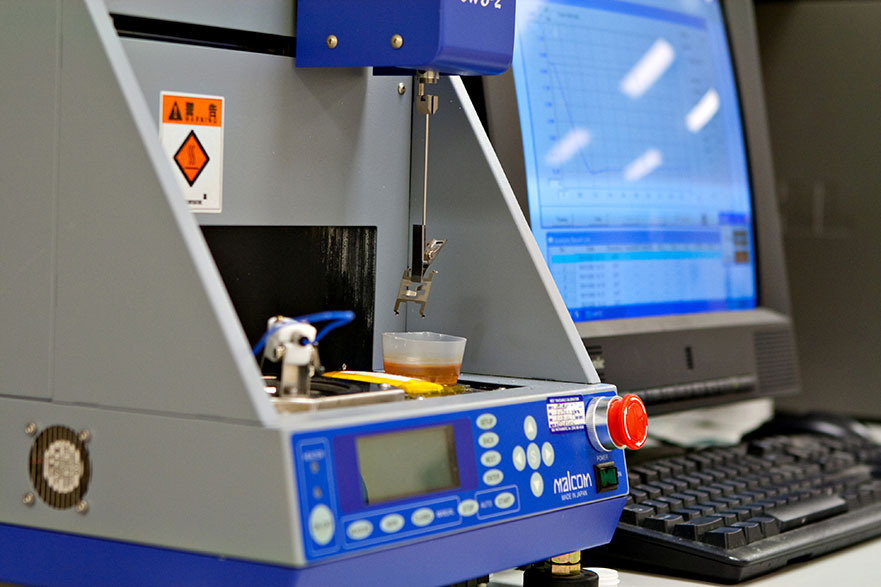Wetting Balance Testing

The solderability of a surface is defined by its solder wetting characteristics. Solder wetting pertains to the formation of a relatively uniform, smooth, and unbroken film of solder that exhibits excellent adherence on the soldered surface. Non-wetting, on the other hand, is the condition wherein the solder coating has contacted the surface but did not adhere completely to it, causing the surface or a part thereof to be exposed. Dewetting is the condition wherein the solder recedes after coating a surface, creating irregular mounds of solder, but leaving behind no exposed areas.
Wetting balance testing is a quantitative solderability test that measures the wetting forces between molten solder and the test surface as a function of time. The plot starts with the wetting force being negative (non-wet condition), which rises until it crosses the zero axis of wetting force, indicating that wetting has occurred. The time it takes for wetting to occur is one parameter used to assess solderability. It is utilized to measure the willingness to take solder on both leaded and non-leaded surface mount (SMT) and thru-hole (PTH) components, with either leaded or lead-free solder. Testing is performed per IPC J-STD-002, IPC J-STD-003 or Mil-Std-883 specifications.












